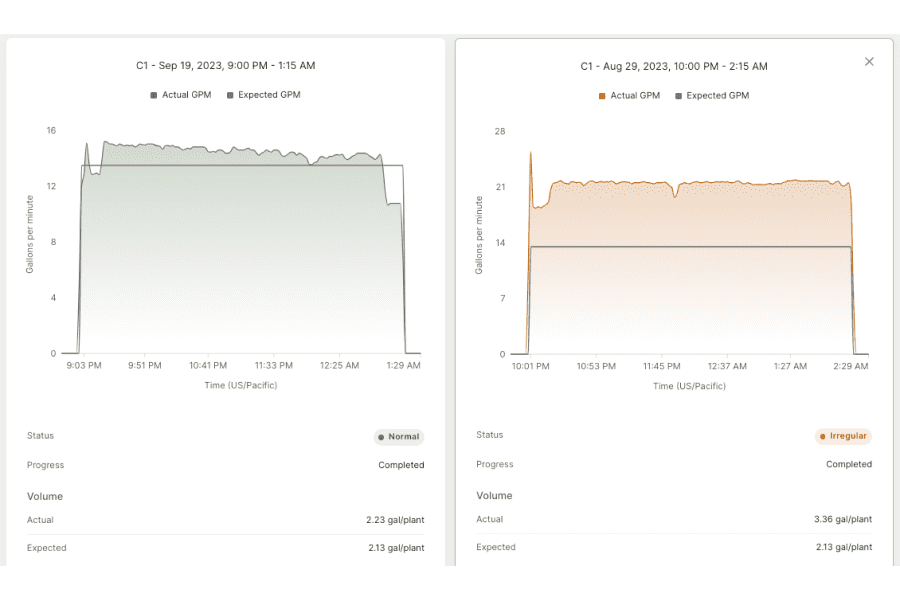The Power of Setting and Measuring a Baseline Irrigation Flow Rate

Most growers have a rough sense of how much water flows through their irrigation system, but very few have a precise and accurate measure of what their baseline rate really is.
It’s just like with food and money—we all kind of know how much we’re eating and spending. But if you never take the time to sit down and add it all up, you don’t really know. Going through the exercise of figuring out what your baseline really is can be eye-opening to say the least.
Water’s the same way.
So let’s talk about the problems not having an accurate baseline creates for growers, and how setting one can solve them.
The Problem with Flying Blind
If you don’t have the necessary infrastructure to measure the flow rate of your irrigation system precisely, then you’re left with rough estimates.
The first problem is obvious—estimates are hard. It’s super challenging to gauge quantities, especially when you have no easy way to verify how close your rough numbers are to reality.
The second problem is that it’s possible for your baseline flow rate to drift over time—as small holes and cracks develop, as emitters get lost, as the regular wear and tear of farm life happens—without anyone really noticing or changing irrigation durations accordingly.
And the third and final problem is that without a baseline to compare against, you have no automatic way to detect leaks or clogs or pump problems. Irrigation issues produce deviations from the baseline flow rate. The only way to flag them automatically is to know what that base rate is.
What Happens When You Turn the Lights On
When getting a new vineyard up and running with Lumo smart valves with built-in flow meters it’s amazing to see viticulturists and vineyard managers react to seeing actual flow rates for the first time. Looks of surprise, shock, horror.
Sometimes past estimates aren’t so far off, but sometimes they are. Or sometimes there’s way more variation between blocks than what was expected or accounted for. Sometimes there are a bunch of small issues that can quickly be repaired. Other times bigger issues with pumps and pressure tanks are brought to light.
But what is rare is for someone to see flow rate numbers that line up precisely with what they had been estimating previously, or for them to make no adjustments to their irrigation scheduling based on the numbers they’re now seeing.
That’s the magic of using Lumo and measuring flow rates—you’re able to set an accurate baseline flow rate that’s grounded in reality and based on objective data.
What Having a Better Baseline Solves
Tracking flow rates with technology removes the need for estimating anything, so the challenges related to getting your estimates right simply fall away.
So does the problem with your flow rates unknowingly drifting over time. With a baseline flow rate established, and new data coming in regularly, there’s no longer room for drift to occur. If your flow rates start to decline, you’ll know.
Which brings us to the best part about having a baseline established—you’re now able to see whenever an irrigation issue occurs. In fact, with Lumo, we flag these deviations from baseline automatically and alert growers to the problem.
No guesswork. No drift. And no way for issues to go undetected. That’s the power of setting and measuring an accurate baseline flow rate for your irrigations. Know exactly what to expect and know exactly when your irrigation system is failing to meet those expectations.
To learn more about how you can determine and measure against your baseline flow rates with Lumo, request a demo here or email us at [email protected]